
2022/05/20 - 2022/05/20
64位(同エリア1522件中)
![]()
旅熊 Kokazさん
- 旅熊 KokazさんTOP
- 旅行記1436冊
- クチコミ844件
- Q&A回答95件
- 1,106,972アクセス
- フォロワー608人
この旅行記のスケジュール
2022/05/20
この旅行記スケジュールを元に
金曜日の午後、メトロポリタン美術館展へ
同展のHPはこちら↓
https://met.exhn.jp/highlight/
メトロポリタン美術館展が改修中で、この展覧会が可能になったようです。
(2013年1月のメトロポリタン美術館訪問の記録
https://4travel.jp/travelogue/11135548 )
- 旅行の満足度
- 5.0
PR
-
六本木駅から歩いて、もうすぐ国立新美術館に到着
-
国立新美術館 美術館・博物館
-
-
-
-
-
-
-
入館
-
-
-
-
-
-
-
-
少し待って無事入場!
-
ここから先は撮影禁止
以下の画像・文章は、メトロポリタン美術館のHPから拝借
https://www.metmuseum.org/
https://www.metmuseum.org/about-the-met/collection-areas/european-paintings -
The Crucifixion
ca. 1420-23
Fra Angelico (Guido di Pietro) Italian
This early work by Fra Angelico accentuates the drama of the Crucifixion by showing the Virgin collapsed in grief with the lamenting Maries and emphasizing the varied attitudes of the Roman soldiers and their horses. There is an exquisite delicacy about this work that Fra Angelico will develop in his mature paintings. The innovative circular composition was inspired by the bronze doors created by Lorenzo Ghiberti for the Baptistry of Florence.
Artwork Details
Title: The Crucifixion
Artist: Fra Angelico (Guido di Pietro) (Italian, Vicchio di Mugello ca. 1395?1455 Rome)
Date: ca. 1420-23
Medium: Tempera on wood, gold ground
Dimensions: 25 1/8 x 19 in. (63.8 x 48.3 cm)
Classification: Paintings
Credit Line: Maitland F. Griggs Collection, Bequest of Maitland F. Griggs, 1943
Accession Number: 43.98.5 -
Madonna and Child Enthroned with Two Angels
ca. 1440
Fra Filippo Lippi Italian
The Virgin holds a rose as the Bride of Christ and is seated on the Throne of Wisdom. The scroll held by an angel reads: "Come over to me, all ye that desire me, and be filled with my fruits." (Ecclesiasticus 24:19) The picture is the center of an important triptych. Lippi was the most innovative painter in Italy and was closely attentive to Netherlandish painting: notable here is his varied study of light and the active pose of the child, perhaps inspired by the sculpture of Donatello.
Artwork Details
Title: Madonna and Child Enthroned with Two Angels
Artist: Fra Filippo Lippi (Italian, Florence ca. 1406?1469 Spoleto)
Date: ca. 1440
Medium: Tempera and gold on wood, transferred from wood
Dimensions: Arched top, 48 1/4 x 24 3/4 in. (122.6 x 62.9 cm)
Classification: Paintings
Credit Line: The Jules Bache Collection, 1949
Accession Number: 49.7.9 -
Paradise
1445
Giovanni di Paolo (Giovanni di Paolo di Grazia) Italian
Together with a scene of the Creation and Expulsion from Paradise, also in the Metropolitan (Robert Lehman Collection), this picture formed the base (predella) of an altarpiece formerly in the church of San Domenico, Siena (Galleria degli Uffizi, Florence). Painted in 1445, the two paintings rank among the finest works by the artist. Groups of saints and angels embrace in a rich, tapestry-like garden of Paradise. Giovanni di Paolo was much inspired by paintings he saw in Florence by Fra Angelico, but he rejected the perspectival rationalism of Florentine art in favor of a visionary effect of exquisite intensity. For more information about this painting, including a reconstruction of the altarpiece, visit metmuseum.org.
Artwork Details
Title: Paradise
Artist: Giovanni di Paolo (Giovanni di Paolo di Grazia) (Italian, Siena 1398?1482 Siena)
Date: 1445
Medium: Tempera and gold on canvas, transferred from wood
Dimensions: 18 7/16 × 16 1/16 in. (46.8 × 40.8 cm); painted surface 17 1/2 x 15 1/8 in. (44.5 x 38.4 cm)
Classification: Paintings
Credit Line: Rogers Fund, 1906
Accession Number: 06.1046 -
Virgin and Child
ca. 1455-60
Dieric Bouts Netherlandish
Dieric Bouts has based this small, exquisite image on the ancient Byzantine formula for the affectionate Virgin (glykophilousa)?a type popular in the Netherlands. However, he has dispensed with the gold background and halo of Byzantine practice and has endowed the painting with a human tenderness and simplicity not found in icons. With his subtle and tactile modeling of the flesh, the artist heightened the illusion of living, breathing beings. Focusing on the loving relationship of a mother and her son, his portrayal emphasized human emotions and enhanced the intense inner experience of private devotion.
Artwork Details
Title: Virgin and Child
Artist: Dieric Bouts (Netherlandish, Haarlem, active by 1457?died 1475)
Date: ca. 1455-60
Medium: Oil on wood
Dimensions: 8 1/2 x 6 1/2 in. (21.6 x 16.5 cm)
Classification: Paintings
Credit Line: Theodore M. Davis Collection, Bequest of Theodore M. Davis, 1915
Accession Number: 30.95.280 -
Madonna and Child
ca. 1480
Carlo Crivelli Italian
This perfectly preserved work is one of the artist's most exquisite pictures. Flemish painting may have inspired the remarkable precision of detail in the background, where turbaned figures (infidels) stroll. Trompe-l’oeil details are played against the doll-like prettiness of the Virgin. The apples and fly are symbols of sin and evil and are opposed to the cucumber and the goldfinch, symbols of redemption. Crivelli’s signature is on what looks like a piece of paper attached to the watered-silk cloth with wax.
Artwork Details
Title: Madonna and Child
Artist: Carlo Crivelli (Italian, Venice (?), active by 1457?died 1494/95 Ascoli Piceno)
Date: ca. 1480
Medium: Tempera and gold on wood
Dimensions: Overall 14 7/8 x 10 in. (37.8 x 25.4 cm); painted surface 14 3/8 x 9 1/4 in. (36.5 x 23.5 cm)
Classification: Paintings
Credit Line: The Jules Bache Collection, 1949
Accession Number: 49.7.5 -
The Rest on the Flight into Egypt
ca. 1512-15
Gerard David Netherlandish
This composition presents the Flight into Egypt as a continuous narrative. In a tiny background scene the Holy Family emerges from the forest, en route to the contemporary Netherlandish town at the left. In the foreground Mary nurses the Child in a moment of repose on their arduous journey, which the viewer is visually meant to follow. David achieved in this painting a remarkable balance of color and a serene sense of light and atmosphere. His awareness of Italian Renaissance conventions is evident in the pyramidal motif of the Virgin and Child and his use of chiaroscuro to convey the volume of the figures.
Title: The Rest on the Flight into Egypt
Artist: Gerard David (Netherlandish, Oudewater ca. 1455-1523 Bruges)
Date: ca. 1512-15
Medium: Oil on wood
Dimensions: 21 in. × 15 11/16 in. (53.3 × 39.8 cm)
Classification: Paintings
Credit Line: The Jules Bache Collection, 1949
Accession Number: 49.7.21 -
The Judgment of Paris
ca. 1528
Lucas Cranach the Elder German
Cranach became a celebrated court painter for the electors of Saxony in Wittenberg. Among the most popular mythological scenes produced by him and his workshop for his courtly patrons were those featuring Venus, in particular the Judgment of Paris. Painted about 1528, this picture depicts Paris, dressed in a contemporary suit of armor, as he deliberates over the fairest of three goddesses: Minerva, Venus, and Juno. While Mercury stands nearby holding the coveted prize?a golden apple (here transformed into a glass orb)?Cupid aims his arrow at Venus, signaling Paris’s decision in favor of the goddess of love.
Artwork Details
Title: The Judgment of Paris
Artist: Lucas Cranach the Elder (German, Kronach 1472?1553 Weimar)
Date: ca. 1528
Medium: Oil on beech
Dimensions: 40 1/8 x 28in. (101.9 x 71.1cm)
Classification: Paintings
Credit Line: Rogers Fund, 1928
Accession Number: 28.221 -
The Musicians
1597
Caravaggio (Michelangelo Merisi) Italian
While Cupid confirms Caravaggio’s allegorical frame for representing Music, the artist equally engages with contemporary performance and individualized models, including a self-portrait in the second boy from the right. Caravaggio’s contemporary, Giovanni Baglione, recorded that the artist painted "a concert, with some youths portrayed from nature very well" immediately after joining the household of his first great patron, Cardinal Francesco Maria del Monte. Most likely, this is the same painting and is one of several employing the half-length, earthy yet sensual figures with which Caravaggio made his name upon arriving in Rome.
Artwork Details
Title: The Musicians
Artist: Caravaggio (Michelangelo Merisi) (Italian, Milan or Caravaggio 1571?1610 Porto Ercole)
Date: 1597
Medium: Oil on canvas
Dimensions: 36 1/4 x 46 5/8 in. (92.1 x 118.4 cm)
Classification: Paintings
Credit Line: Rogers Fund, 1952
Accession Number: 52.81 -
The Fortune-Teller
probably 1630s
Georges de La Tour French
Darting eyes and busy hands create a captivating narrative between otherwise staid figures, each of which is richly clothed in meticulously painted combinations of color and texture. La Tour has taken on a theme popularized in Northern Europe by prints and in Rome by Caravaggio: an old Roma (traditionally known by the derisive term “Gypsy”) woman reads the young man’s fortune as her beautiful companions take the opportunity to rob him. This celebrated painting, which was only discovered in the mid-twentieth century, is inscribed with the name of the town where the artist lived in northeastern France, supporting the possibility that he developed such works independent of Caravaggio’s precedent.
Artwork Details
Title: The Fortune-Teller
Artist: Georges de La Tour (French, Vic-sur-Seille 1593?1653 Lunéville)
Date: probably 1630s
Medium: Oil on canvas
Dimensions: 40 1/8 x 48 5/8 in. (101.9 x 123.5 cm)
Classification: Paintings
Credit Line: Rogers Fund, 1960
Accession Number: 60.30 -
鑑賞が終わって、地下のミュージアムショップへ
-
-
-
-
-
-
帰りは、乃木坂駅へ
利用規約に違反している投稿は、報告する事ができます。
旅行記グループ
国内の美術館・博物館巡り
-
前の旅行記
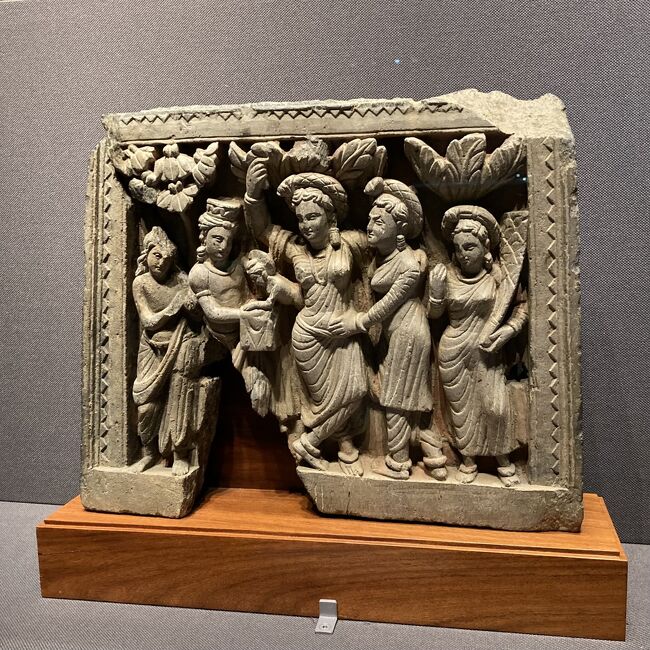
"東京国立博物館" 空也上人と六波羅蜜寺展のついでに、"考古展示室"・"本館(日本ギャラリー)"・"東洋館"...
2022/05/06~
上野・御徒町
-
次の旅行記

出張のついでに、初めての "山梨県立美術館" で "ミレー" 鑑賞。カフェテリアのカレーも美味だった!
2022/06/22~
甲府
-
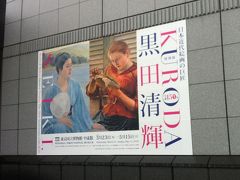
2016年4月 東京国立博物館 特別展「生誕150年 黒田清輝─日本近代絵画の巨匠」
2016/04/28~
上野・御徒町
-
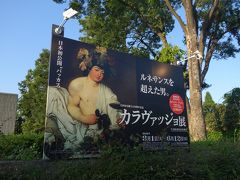
2016年6月 国立西洋美術館 「日伊国交樹立150周年記念 カラヴァッジョ展」
2016/06/03~
上野・御徒町
-
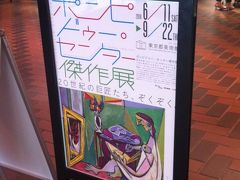
2016年8月 東京都美術館 「ポンピドゥーセンター傑作展 ―ピカソ、マティス、デュシャンからクリストまで―...
2016/08/12~
上野・御徒町
-

2016年10月 国立新美術館 「日伊国交樹立150周年特別展 アカデミア美術館所蔵 ヴェネツィア・ルネサン...
2016/10/10~
六本木
-
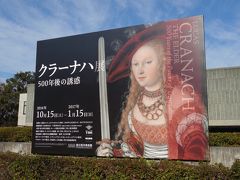
2017年1月 国立西洋美術館 「クラーナハ展―500年後の誘惑」
2017/01/02~
上野・御徒町
-
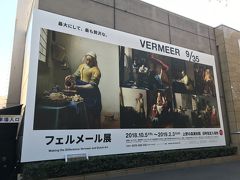
【現地速報】上野の森美術館 フェルメール展
2019/01/04~
上野・御徒町
-
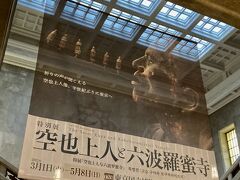
本日(2022年5月8日)最終日の "空也上人と六波羅蜜寺" 展。かなりシュールな "空也上人立像" を拝み...
2022/05/06~
上野・御徒町
-
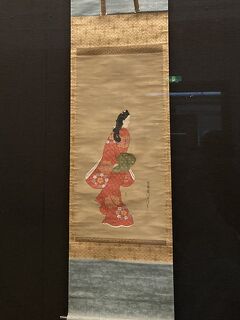
"東京国立博物館" 空也上人と六波羅蜜寺展のついでに、"考古展示室"・"本館(日本ギャラリー)"・"東洋館"...
2022/05/06~
上野・御徒町
-
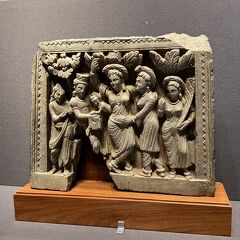
"東京国立博物館" 空也上人と六波羅蜜寺展のついでに、"考古展示室"・"本館(日本ギャラリー)"・"東洋館"...
2022/05/06~
上野・御徒町
-

あと4日で閉幕(会期は5月30日まで)! "国立新美術館" の "メトロポリタン美術館展" へ
2022/05/20~
六本木
-

出張のついでに、初めての "山梨県立美術館" で "ミレー" 鑑賞。カフェテリアのカレーも美味だった!
2022/06/22~
甲府
-

"ピカソ 初期から晩年まで8作品来日"。国立新美術館にて、"ルートヴィヒ美術館展" 鑑賞!(なぜケルンの英語...
2022/09/22~
六本木
-
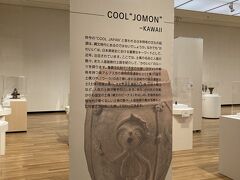
COOL "JOMON" - Kawaii 2度目の "山梨県立美術館"。11月6日まで開催中の "縄文展...
2022/09/28~
甲府
-

3度目の "山梨県立美術館"。日本のダリかマグリットか?ご当地出身 "詩情(ポエジイ)のシュルレアリスム画家...
2022/12/20~
甲府
-
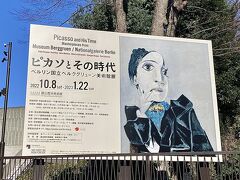
"国立西洋美術館" で22日まで開催中。"ピカソとその時代 ベルリン国立ベルクグリューン美術館展"① ピカソ...
2023/01/04~
上野・御徒町
-
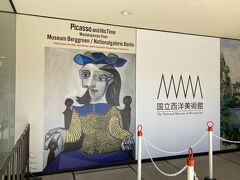
国立西洋美術館 "ピカソとその時代 ベルリン国立ベルクグリューン美術館展"② クレーも一生分、マティスとジャ...
2023/01/04~
上野・御徒町
-

クラーナハのこんな作品も。"ピカソとその時代 ベルリン国立ベルクグリューン美術館展" のついでに、"国立西洋...
2023/01/04~
上野・御徒町
-
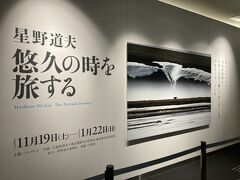
アラスカの自然、人、暮らし・・・。初めての "東京都写真美術館(TOP MUSEUM)" で、写真展 "星野...
2023/01/20~
恵比寿・代官山
-

"泉屋博古館東京 住友コレクション 中国青銅器名品選" へ。「鼎(てい)」とか「卣(ゆう)」とか難読漢字にも...
2023/02/09~
六本木
-

第2回大泉町遠征① "フランソワ・ポンポンのしろくま" 目当てに行ったみた "群馬県立館林美術館" は、思い...
2023/02/14~
館林
-

第2回大泉町遠征② "群馬県立館林美術館" にて、"山中現 展 ~描かれた詩~" 鑑賞
2023/02/14~
館林
-

【4月9日まで 東京都美術館 にて開催中】"レオポルド美術館 エゴン・シーレ展 ウィーンが生んだ若き天才" ...
2023/03/22~
上野・御徒町
-

"東京国立近代美術館70周年記念展 重要文化財の秘密" ①東京駅から東京国立近代美術館へ。経由した"皇居東外...
2023/05/09~
丸の内・大手町・八重洲
-
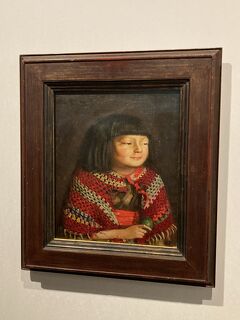
"東京国立近代美術館70周年記念展 重要文化財の秘密" ②ある意味 "無茶な展覧会" 鑑賞 & 神保町 "唐...
2023/05/09~
丸の内・大手町・八重洲
-

2023年6月 "東京都美術館" にて、"マティス展 ~色、形、線、冒険のはじまり: The Path to...
2023/06/15~
上野・御徒町
旅行記グループをもっと見る
コメントを投稿する前に
十分に確認の上、ご投稿ください。 コメントの内容は攻撃的ではなく、相手の気持ちに寄り添ったものになっていますか?
サイト共通ガイドライン(利用上のお願い)報道機関・マスメディアの方へ 画像提供などに関するお問い合わせは、専用のお問い合わせフォームからお願いいたします。
この旅行で行ったスポット
旅の計画・記録
マイルに交換できるフォートラベルポイントが貯まる
フォートラベルポイントって?


















































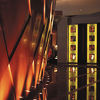

旅行記グループ 国内の美術館・博物館巡り
0
34